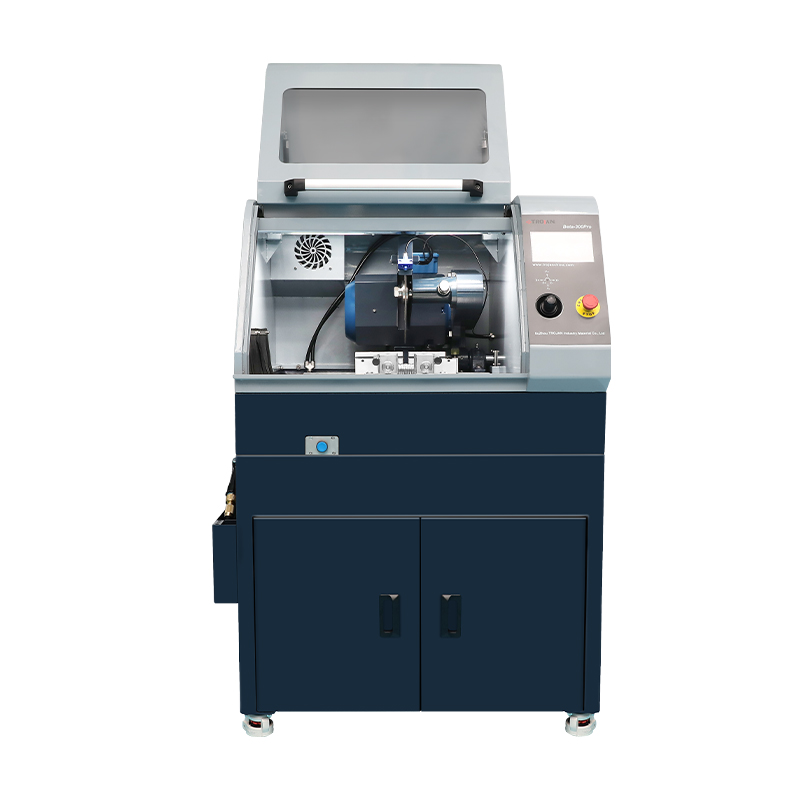Automation and computer-controlled technology have brought about transformative advancements in various industries, and the field of metallography is no exception. Over recent years, the integration of automation and computer-controlled systems has significantly enhanced the efficiency and accuracy of metallographic cutting processes. These innovations have revolutionized the way samples are prepared, analyzed, and interpreted, leading to more precise and reliable results. In this discussion, we will explore the profound impact of automation and computer-controlled technology on metallographic cutting processes, highlighting key benefits and advancements.
1. Precision and Consistency:
Automation and computer-controlled systems excel at executing tasks with consistent precision. In metallographic cutting, this translates to uniform and accurate sectioning of samples. Traditional manual cutting methods often introduced variability due to human factors, leading to uneven cuts, altered sample dimensions, and compromised results. Computer-controlled
cutting equipment eliminates these issues by precisely controlling cutting parameters such as cutting speed, feed rate, and sample positioning. This results in consistently high-quality sections, enabling researchers to rely on accurate data for analysis.
2. Reduced Human Error:
Human error is an inherent risk in any manual process. With automated metallographic cutting, the potential for errors arising from fatigue, distraction, or oversight is greatly reduced. Computer-controlled systems execute cutting routines exactly as programmed, minimizing the chance of mistakes. This reduction in human error contributes to data integrity and reproducibility, which are crucial in scientific research and industrial applications.
3. Increased Throughput:
Automated metallographic cutting systems can process a larger number of samples in a shorter time compared to manual methods. This increased throughput is particularly valuable in industrial settings where efficiency is paramount. Researchers can analyze more samples within a given timeframe, accelerating research and development processes and enabling quicker decision-making.
4. Complex Sample Preparation:
Some materials are extremely hard, brittle, or delicate, making them challenging to section manually without causing damage. Automation allows for the precise control of cutting forces, minimizing the risk of sample deformation, cracking, or breakage. This enables the preparation of sections from a wider range of materials, expanding the scope of research possibilities.

5. Customization and Programmability:
Modern automated metallographic cutting systems offer a high degree of customization and programmability. Users can define cutting paths, angles, and depths with intricate detail. This flexibility is particularly advantageous when dealing with complex sample geometries or when specific sectioning requirements are needed to capture certain features accurately.
6. Advanced Imaging and Analysis:
Automation extends beyond the cutting process itself. Computer-controlled cutting systems can be integrated seamlessly with imaging and analysis equipment. This enables researchers to capture detailed images of the cut surfaces, allowing for precise measurements, grain size analysis, and defect detection. The combination of automated cutting and advanced imaging techniques contributes to a deeper understanding of material properties.
7. Remote Monitoring and Control:
Some automated cutting systems offer remote monitoring and control capabilities. This is especially relevant in situations where the cutting equipment is located in a controlled environment such as a cleanroom or hazardous area. Researchers can monitor the cutting process, adjust parameters, and receive real-time updates without needing to be physically present at the equipment.
8. Data Logging and Documentation:
Automation facilitates accurate data logging and documentation. Cutting parameters, sample information, and cutting paths can be automatically recorded and associated with each sample. This creates a comprehensive record of the preparation process, enhancing traceability and reproducibility.
9. Skill Enhancement and Training:
Automated systems reduce the skill barrier required for proficient sample preparation. While manual methods often demanded extensive training and experience, automated equipment allows less-experienced technicians to achieve consistent results. This democratization of the sample preparation process opens opportunities for broader participation in materials research.
In conclusion, automation and computer-controlled technology have brought about a paradigm shift in the efficiency and accuracy of metallographic cutting processes. The benefits range from improved precision and consistency to increased throughput and advanced imaging capabilities. These advancements have not only accelerated research and development but have also enabled a deeper understanding of material properties and behaviors. As technology continues to evolve, it is likely that automation will continue to play a pivotal role in shaping the future of metallographic analysis, making it more accessible, efficient, and informative than ever before.

